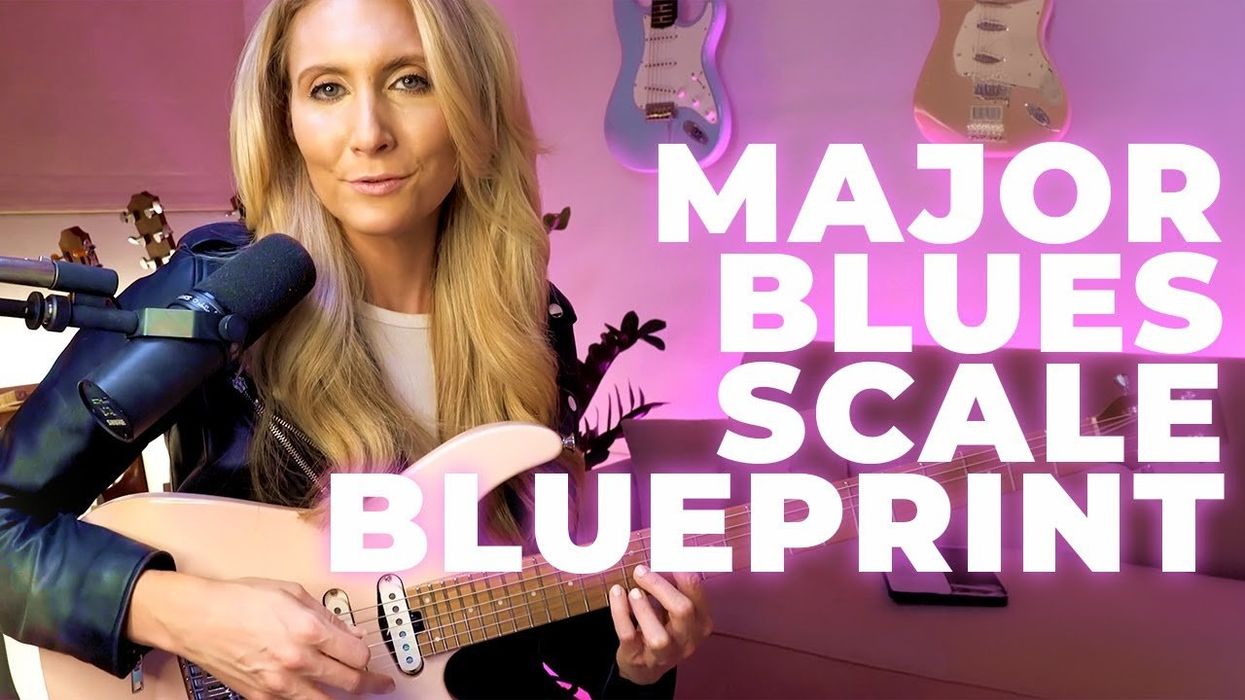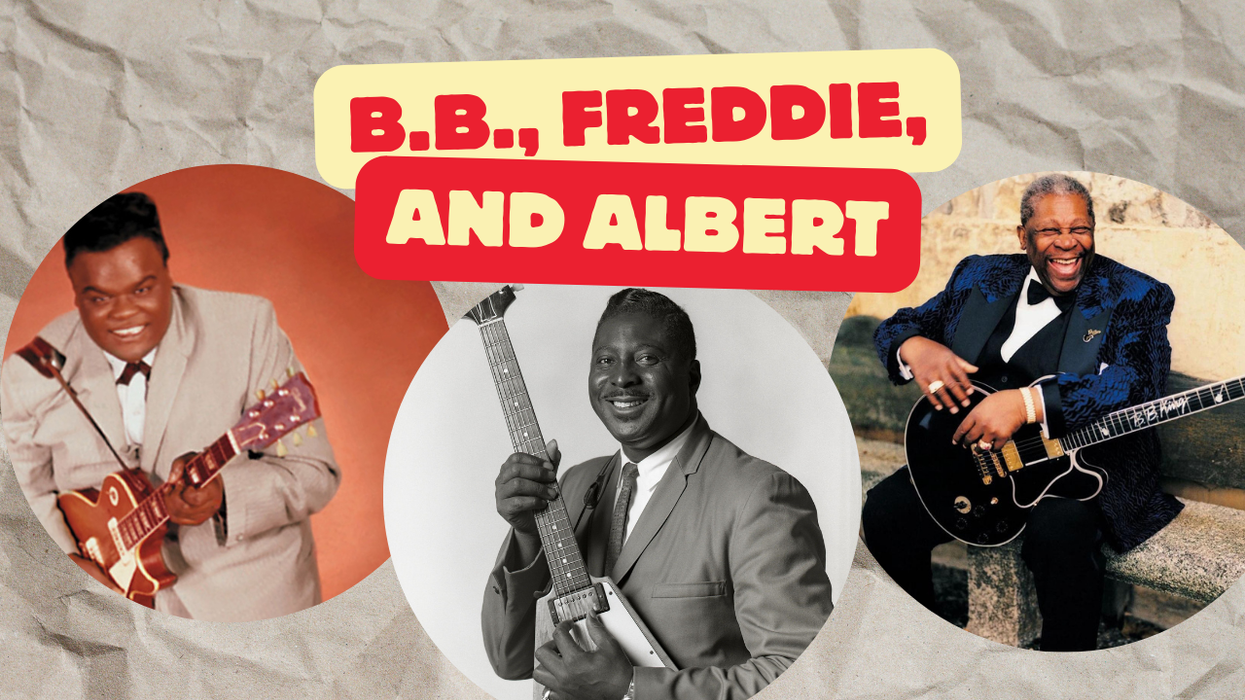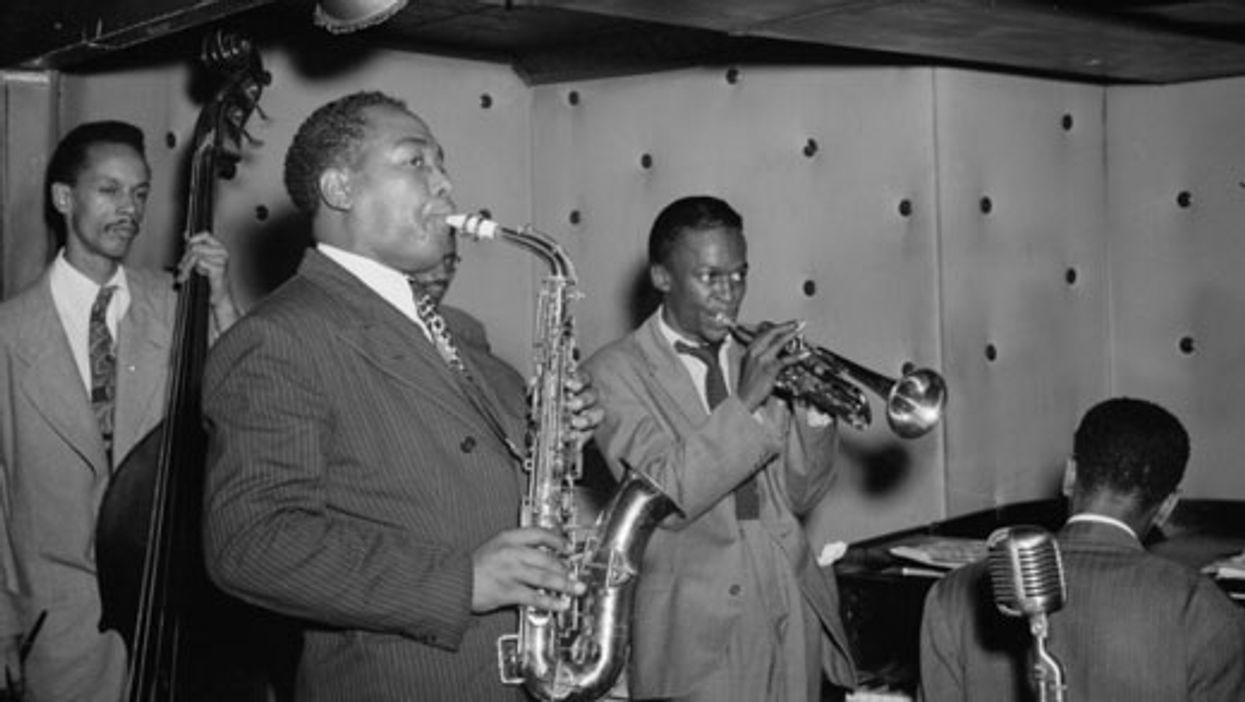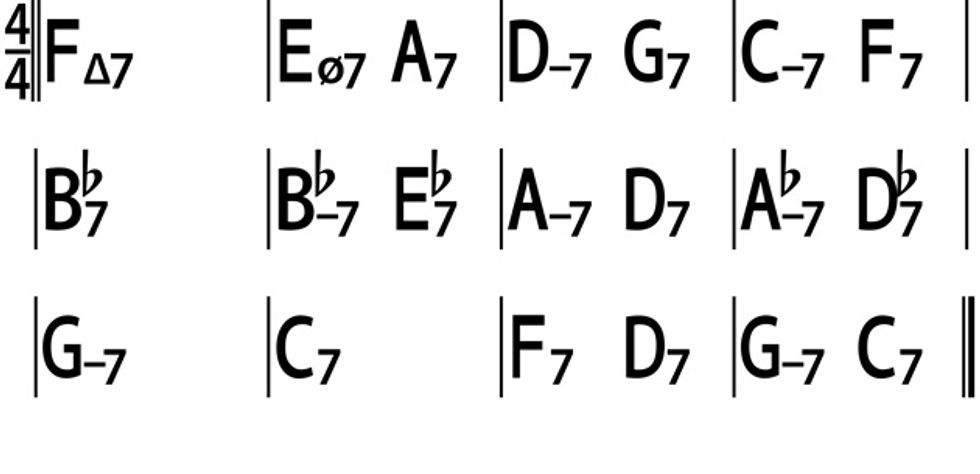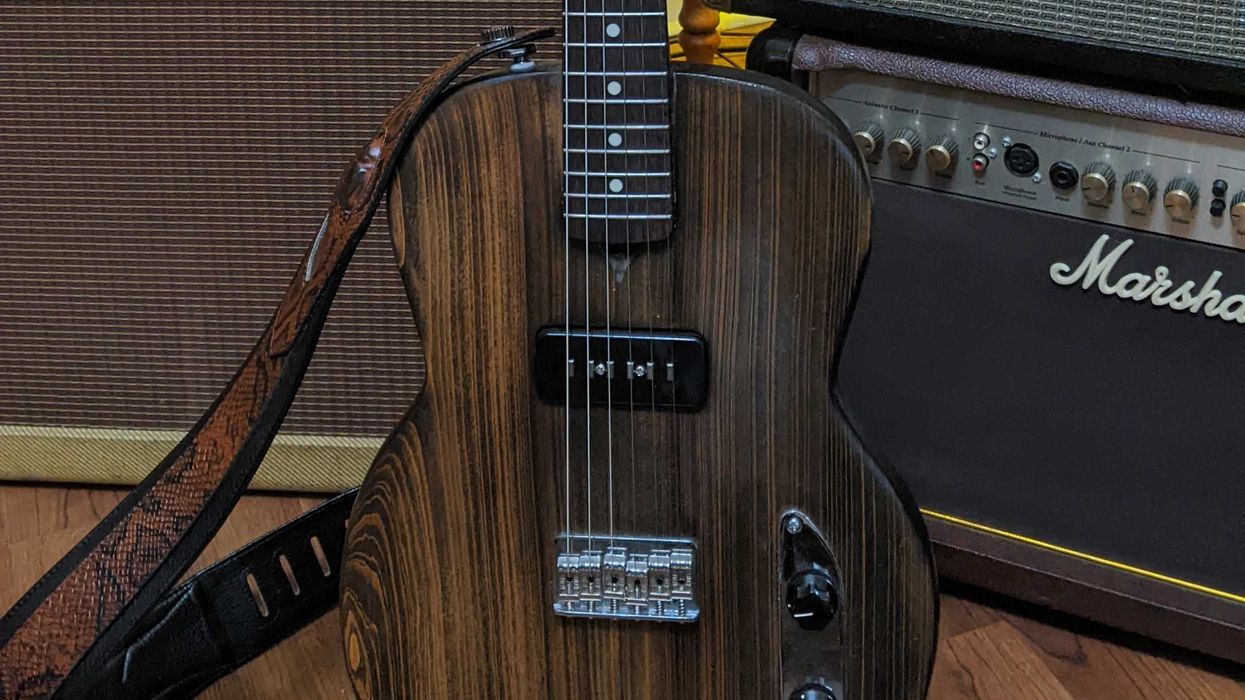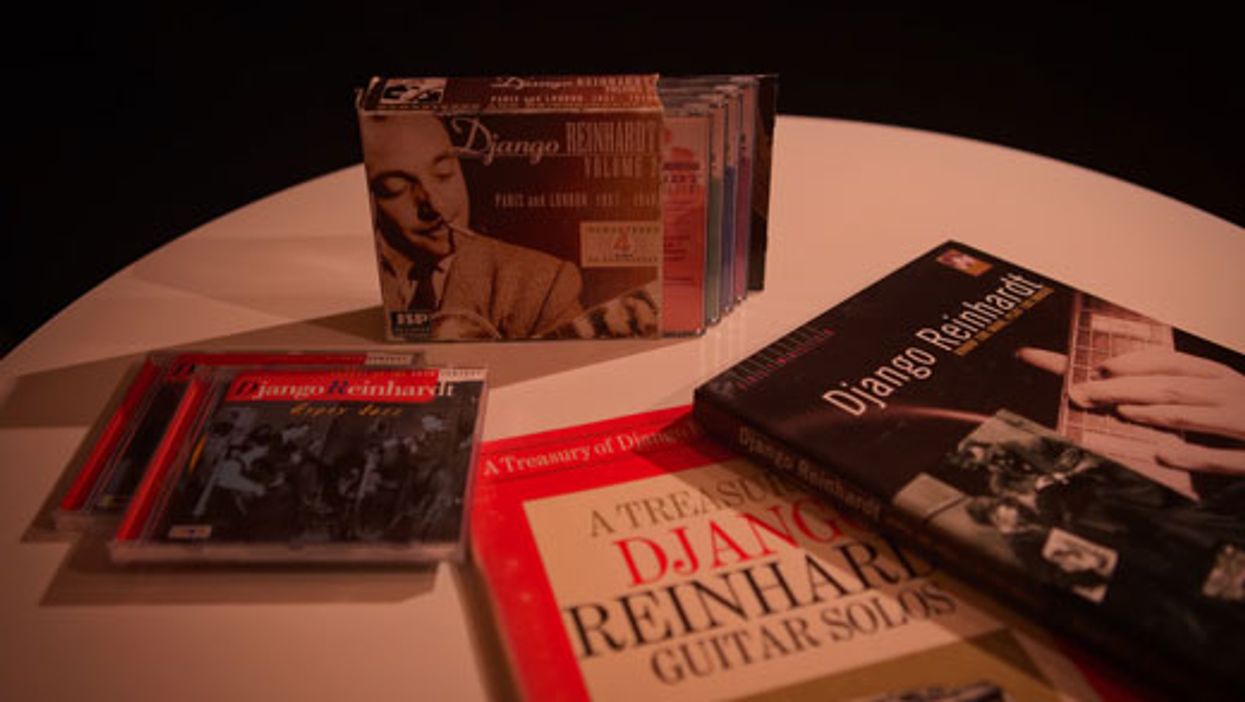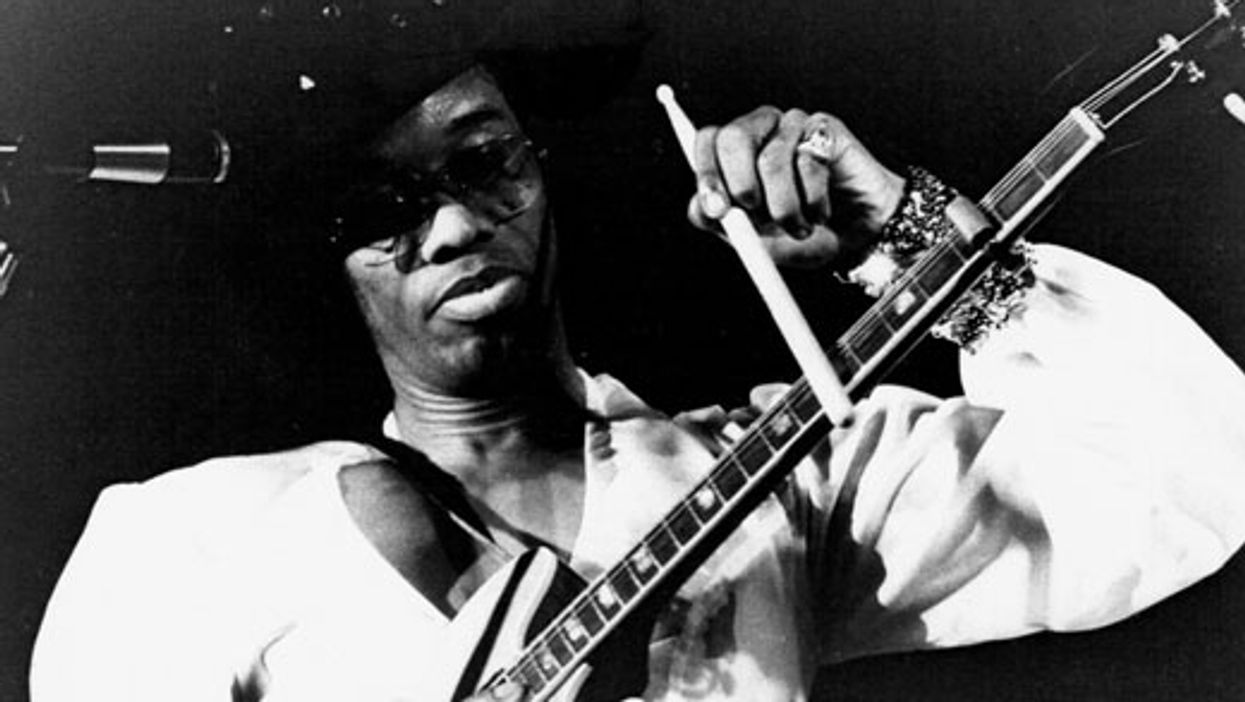Combining bass lines with chords can be an effective way to perform solo or accompany a singer or other instrumentalist. This technique is often employed to thicken up parts in a setting where there's space to fill. While common among jazz guitar players, it is equally suitable in other styles of music, and lends itself very nicely to blues playing.
Ex. 1 consists of a common blues bass line. This line can be heard on many classic recordings and is a simple way to outline a basic 12-bar blues. We are going to use this line as our foundation as we begin to add chords in the next example. Some examples in the repertoire of this type of bass line can be heard on Albert King's recording of "Blues Power" and "Personal Manager." Another example of this type of line can be heard in Tommy Shannon's bass playing on the recording of the Elmore James' classic "The Sky Is Crying" on the Stevie Ray Vaughan album, The Sky Is Crying.
Ex. 1
The Sky is Crying - Stevie Ray Vaughan - The Sky is Crying - 1991 (HD)
In Ex. 2, we start to combine this classic line with double-stops that outline the essential notes, or guide tones, of the chord. (Most often those are the 3 and b7 in dominant chords.) As you play these chords, work on getting the articulation of the chord tones to punch through while you continue to hold down the fort with the bass line.
Ex. 2
We play a classic shuffle bassline based almost entirely out of A minor pentatonic (A–C–D–E–G) in Ex. 3. This is a simple way to outline the chords on either a major or a minor blues since this line does not contain the 3 that determines the quality of the chord. Listen to "So Excited" by Stevie Ray Vaughn on his album The Sky Is Crying to hear this type of line in action.
Ex. 3
Stevie Ray Vaughan - So Excited (from Live at the El Mocambo)
Music video by Stevie Ray Vaughan performing So Excited. © 1991 Epic Records, a division of Sony Music Entertainmenthttps://vevo.ly/hNrWkFIn Ex. 4, we apply this line to a major blues by using thirds and fifths to outline the harmony. For example, in measure 1, we play the 3 of an A major triad (C#) triad on beat 2 to punch the harmony through and outline the chord. Notice how we develop the line and add subtle variation by incorporating a "call and response" figure to this idea by slightly altering the line in measure 4. This type of variation can be effective when developing your own musical ideas. Remember when you create your arrangements that slight and subtle can go a long way!
It might help you to think of these double-stops as horn hits or stabs. Check out B.B. King's Live at the Regal for a textbook example of this. The horns on this recording play essential chord tones as a way to outline the harmonies and give evolving texture and forward motion to the rhythm section.
Ex. 4
B.B. KING - Live At The Regal (Full Album 1964)
Ex. 5 takes this idea a step further by adding more double-stops. On beat 3 of measure 1, we outline the b7 and 9 of the chord, giving us an A9 harmony. We answer this harmony in measure 4 when the I chord returns with the b7 and 3 (G–C#) on the last part of beat 3. We play with these ideas throughout the rest of the song form.
Ex. 5
In Ex. 6, we take a look at a simple walking line. It contains a few different examples of how one might connect the harmonies and serves as a springboard for developing other lines later on should you so desire. Notice the turnaround has been changed to I–IV–I–V in order to add some variety and to propel the music forward.
Ex. 6
In Ex. 7, we start to mine for gold! We begin to add some chord inversions to match the walking bass line with harmony. For example, in measure 3, we play a third-inversion A7, and in measure 5, we play a third-inversion D13. Also, we begin to alter the V7 chord by using the E7(#9) chord to add further color, and pay tribute to one of my favorite blues players, Jimi Hendrix! As you initially play this example, make sure you work at getting the chords to ring throughout while you keep the bass line walking. Notice the fingering used in the notation to help you get this harmony to ring out.
Ex. 7
In the recording for Ex. 8, I improvise two choruses on a blues using the above ideas and extrapolate on the ideas a bit further. I combined lines from the previous examples and played with rhythmic variation to mix things up. Also, I outlined the harmony with Roman numerals only to give you a better idea of how you can extract pieces and transpose them to other keys. A good way to dive deeper into this type of playing is to analyze and transcribe classic bass lines and horn section hits on your favorite blues recordings.
Ex. 8
As you continue to work on your playing, I suggest listening to and watching Charlie Hunter videos. His ability to play fluid bass lines, comp chords, and solo simultaneously in a multitude of styles is a true embodiment of mastery. It might also be worth checking out some jazz guitar duet recordings that are regarded as exceptional examples of this style of playing. Although these albums are in the jazz tradition, many ideas about conception, feel, and approach can be gleaned and directly applied to blues guitar playing. The album Solar by John Abercrombie and John Scofield features some blazing playing as they cover both bass lines and chordal comping while trading solos. Another excellent example of this type of interaction and playing can be heard on the Jim Hall and Pat Metheny album.
This article was updated on September 20, 2021


